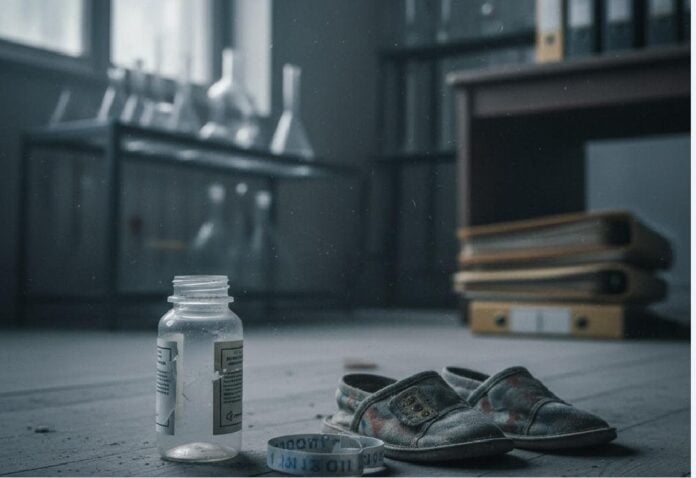By Jyotika Kalra
Over the past month, at least 20 children in Madhya Pradesh and Rajasthan have died after consuming contaminated cough syrups. In Chhindwara district alone, nine families reported chillingly similar symptoms: fever, vomiting, abdominal pain, and a sharp decline in urine output—all consistent with acute kidney injury.
Initial lab reports, however, baffled investigators. The Union Health Ministry and Madhya Pradesh’s State Food and Drug Administration claimed the syrups were clean—no trace of diethylene glycol (DEG) or ethylene glycol (EG), the toxic industrial solvents infamously linked to mass poisonings in the past.
But the story took a grim turn when Tamil Nadu’s Drug Control Department found 48.6 percent DEG contamination in a batch of Coldrif syrup manufactured by Sresan Pharmaceuticals. Their inspection report read like an indictment of India’s regulatory collapse: 364 manufacturing violations—39 critical and 325 major—including unqualified staff, unhygienic water, no pest control, no production monitoring, and zero quality assurance. Shockingly, even sewage was discharged untreated near the storage area.
Tamil Nadu’s health minister insisted his state “acted swiftly” to avert a larger crisis. But that very claim deepens the outrage—because if the state truly acted swiftly, those syrups would never have reached a child’s bedside.
The Comptroller and Auditor General (CAG) had already warned Tamil Nadu in August 2024 about severe gaps in drug testing infrastructure—outdated labs, staffing shortages, and chronic delays. Only a fraction of batches were ever tested. The consequences of ignoring that warning now lie in tiny graves.
As confusion spread, the government’s lab reports contradicted one another—some clearing the syrups, others confirming contamination. The discrepancy exposed a deep dysfunction in the public health apparatus. How can reports meant to save lives deliver opposite findings? How do checks and balances crumble so easily when children’s lives are at stake?
Instead of accountability, a paediatrician from Parasia Civil Hospital in Chhindwara was arrested after his name appeared on prescriptions linked to the case. Charged under the Bharatiya Nyaya Sanhita and the Drugs and Cosmetics Act, he became a scapegoat for a system’s failure. A doctor’s trust in an approved medicine cannot be criminalized—not when the state itself fails to ensure its safety.
In Rajasthan, Kaysons Pharma, a supplier under the Chief Minister’s Free Medicine Scheme, also came under fire. A batch of its cough syrup failed quality tests six months earlier and was banned in February 2025—only to be quietly reinstated later. That reversal reeks of opacity and political interference.
Rajasthan’s health minister’s official response was chillingly dismissive: he denied any deaths due to cough syrup, blaming families instead. “One had meningitis, another had a respiratory infection,” he said, implying negligence on the part of grieving parents.
Such rhetoric betrays a deeper moral rot. In India’s public health narrative, the poor are too often portrayed not as rights-bearing citizens, but as careless dependents. Their suffering is rationalized—not as systemic failure, but as personal fault. This deflection corrodes public trust and distorts governance itself.
Public health is not a contract of convenience; it is a moral covenant. When governments moralize instead of reforming, they betray that covenant.
Whether these approvals were born of neglect or corruption, the truth must surface. With deaths now reported across states, this tragedy demands a national-level, multi-agency probe led by the CBI and Union Health Ministry. Only a transparent inquiry and stricter regulation can restore confidence in India’s pharmaceutical system—before another “safe” medicine turns deadly.
The number of children who fell ill, but survived remains unreported. The tragedy we see may be only a fraction of the horror that truly unfolded.
—The writer is an Advocate-on-Record in Supreme Court and former member, NHRC


